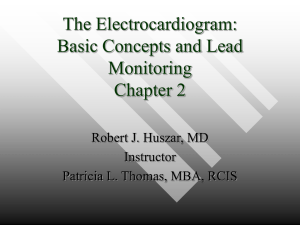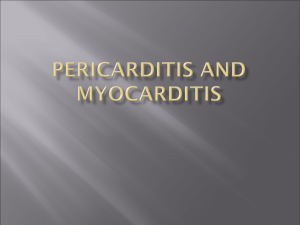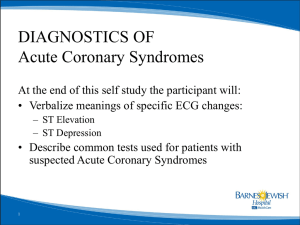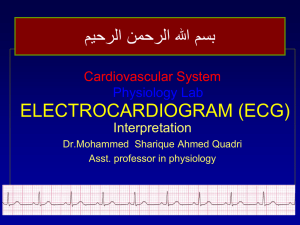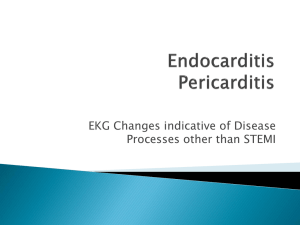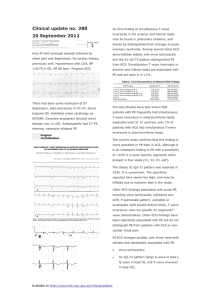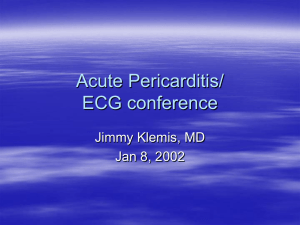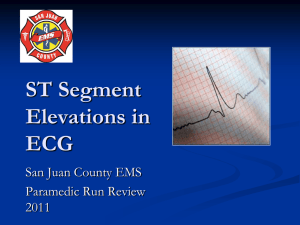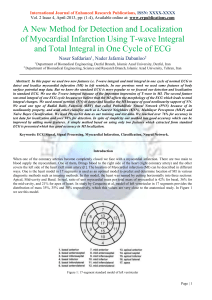Working with ECGs 1
advertisement
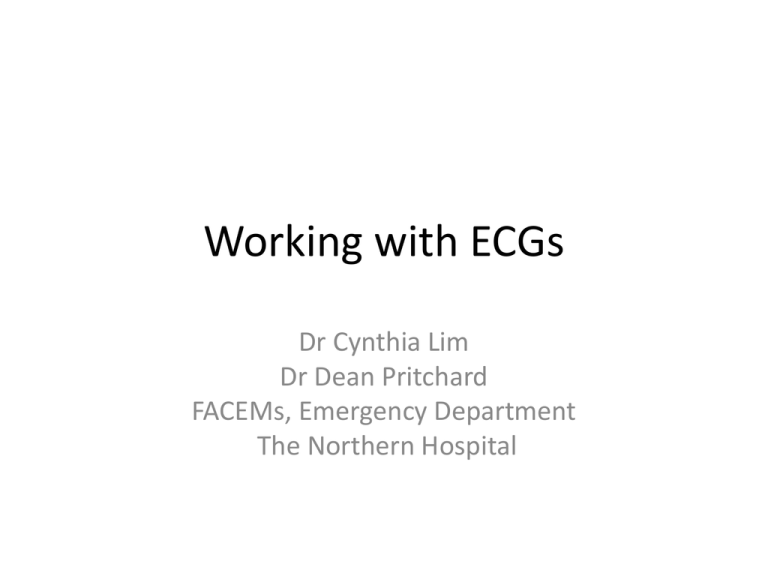
Working with ECGs Dr Cynthia Lim Dr Dean Pritchard FACEMs, Emergency Department The Northern Hospital ECG 123s – Measurement of electrical flow across the heart using electrodes placed on the chest and limbs – Deviation of electrical flow from normal pathways indicates cardiac anomaly or cardiac disease The Leads • Limb Leads – aVR – Right arm – aVL – Left arm – aVF – Left leg • Vectors – – – – Flow of +ve current I – R arm L arm II – R arm L leg III – L arm L leg The Leads • Chest leads – – – – – – V1 V2 V3 V4 V5 V6 Axis Look at leads I and avF If in left quadrant then look at lead II Successive approximation method ECG Morphology Pick the Problem… NORMAL ECG ECG of 2 year old – normal or abnormal? Higher rate, Partial RBBB pattern, Dominant R V1, R axis deviation Chest Pain The Barn Door… Acute anterior ST elevation myocardial infarction The Barn door Acute inferior ST elevation myocardial infarction What about this? Septolateral Non-ST Elevation Myocardial Infarction And this? Acute Pericarditis ACS – STEMI • Any ST dep except V1 or aVR (allowed in acute pericarditis) • ST elevation III > II • Horizontal or convex up ST elevation • New Q waves ACS – acute pericarditis • PR dep multiple leads – Only reliably seen viral – transient • Low voltage and tachycardia = large pericardial effusion • Friction rub • Use T-P as baseline (not P-P interval) • If in doubt serial ECGs T-wave Changes • T-wave inversions – STEMI – After the appearance of ST changes – NSTEMI – After a period of hyperacute T-wave changes • May persist for months or permanently
